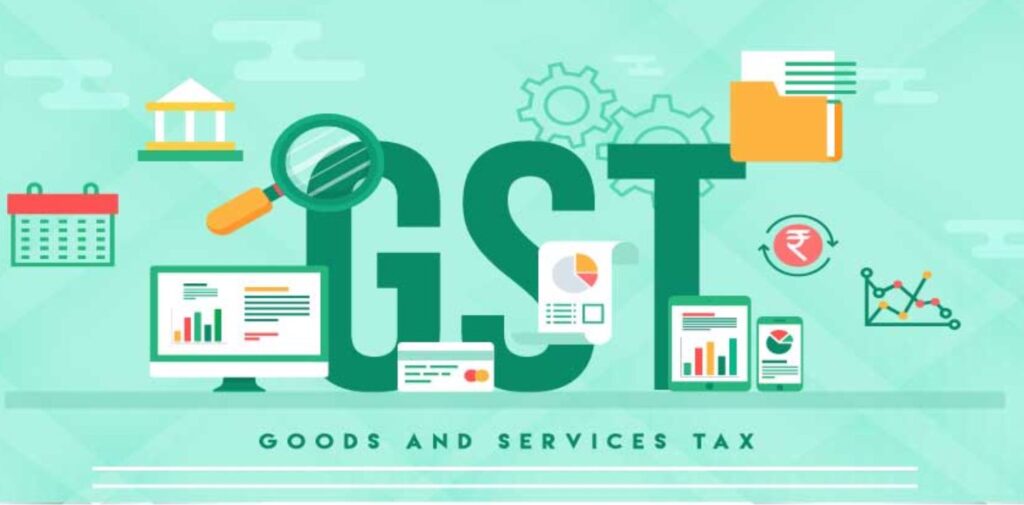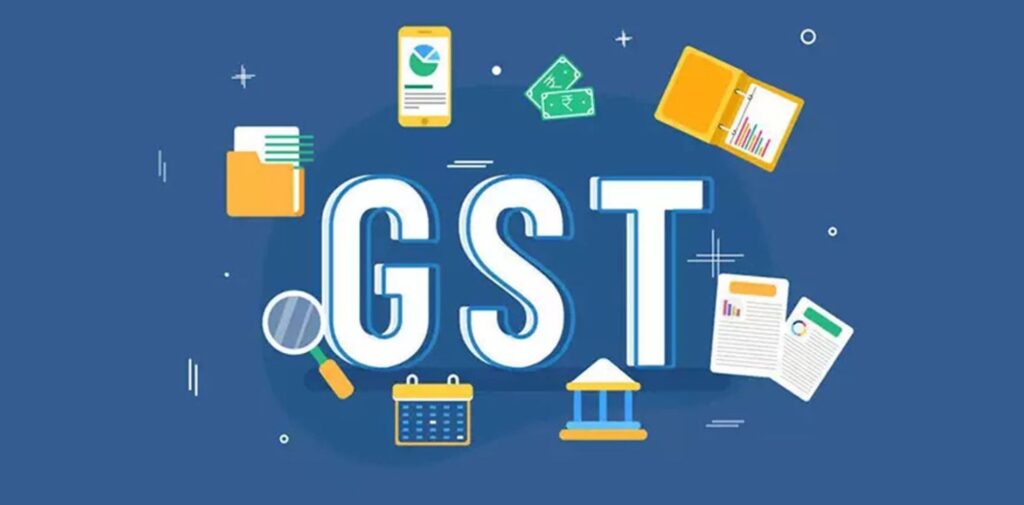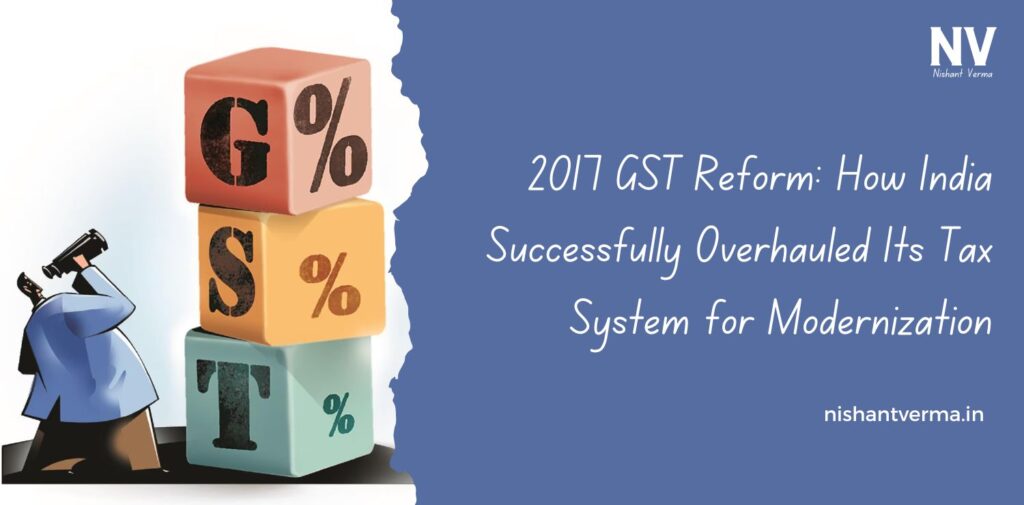India’s Goods and Services Tax (GST) reform in 2017 is one of the most significant economic changes in the country’s history. It was designed to modernize India’s tax system, make it simpler, more efficient, and create a single tax system for the entire country. Before the GST was introduced, India had a complex system of multiple taxes, which often led to confusion and inefficiency. The GST sought to change that, and today, it plays a crucial role in the Indian economy.
In this article, we will take a detailed look at how 2017 GST Reform came into being, its objectives, the challenges faced, and how India managed to successfully implement the tax system.
What is GST?
GST stands for Goods and Services Tax. It is a comprehensive, multi-stage, destination-based tax that is levied on every value addition. Simply put, GST is a single tax that is applied to the sale of goods and services in India. It replaced multiple indirect taxes like VAT, service tax, excise duty, and more, which were levied by both the central and state governments.
There are three types of GST:
- CGST (Central GST): Collected by the central government.
- SGST (State GST): Collected by the state government.
- IGST (Integrated GST): Applied on inter-state transactions, collected by the central government but shared with the state where the goods or services are consumed.

The Need for GST in India
Before the introduction of GST, India had a complex and fragmented tax system. Each state and the central government imposed different taxes, which created several problems:
- Multiple Taxes: Goods and services were taxed at different stages, leading to cascading taxes (tax on tax). For example, the price of a product increased due to taxes at different points of production and sale.
- Complexity: Businesses had to deal with multiple tax structures. Small and medium enterprises, in particular, struggled to comply with different state and central tax regulations.
- Lack of Transparency: There was a lack of transparency in the system, making it harder for businesses to understand how much tax they had to pay.
- Inefficiency: There was inefficiency in the tax system, with a lot of paperwork and bureaucratic hurdles for businesses.
GST aimed to address these issues and create a simplified, transparent, and efficient system.
The Process of Implementing GST
The journey towards implementing GST in India was not easy. It required years of planning, discussions, and collaboration between the central and state governments. Here’s how it happened:
- Formation of GST Council: In 2016, the GST Council was formed to oversee the implementation and regulation of GST. The council is a body consisting of the Finance Minister of India and the Finance Ministers of each state. The council worked together to create the GST law, decide tax rates, and ensure smooth implementation.
- Legal Framework: The government had to amend the Constitution of India to make GST possible. The 101st Constitutional Amendment Act, 2016 was passed, which gave the central government the power to levy taxes on goods and services. This legal change allowed for a uniform tax system across the country.
- Setting Up Technology Infrastructure: GST relies heavily on technology. The government created an online portal (GSTN) where businesses can register, file returns, and pay taxes. This shift to digital processes was crucial for simplifying the system and reducing corruption.
- Public Awareness and Training: To make the transition smooth, the government conducted awareness campaigns and training sessions for businesses and tax professionals. This helped businesses understand how the new system would work and what they needed to do to comply with the new laws.

Key Features of GST
GST has several important features that make it a modern and efficient tax system:
- One Nation, One Tax: GST replaced multiple indirect taxes and created a unified tax system across India. Now, goods and services are taxed at a single rate, making the system easier to understand and manage.
- Elimination of Cascading Taxes: Under the old system, taxes were levied at every stage of production, and tax was paid on tax (cascading effect). With GST, tax is paid only on the value added at each stage of production, eliminating this problem.
- Input Tax Credit: Businesses can claim back the tax they paid on inputs (raw materials) used in production. This ensures that the tax burden is only on the final consumer and not on businesses.
- Simplified Tax Filing: GST introduced a simpler system of tax returns, reducing the paperwork and making it easier for businesses to comply.
- Digitalization: GST is fully integrated into an online system, allowing businesses to register, file returns, and pay taxes electronically. This reduces corruption and delays in tax collection.
Challenges Faced During the GST Implementation
While the introduction of GST was a much-needed reform, it faced several challenges:
- Resistance from States: Some states were initially reluctant to give up their power to impose taxes. There were concerns about revenue loss, especially for states that had higher taxes before GST.
- Technical Issues: The online system for filing returns and making payments faced several technical glitches in the initial phase. Businesses had difficulty navigating the system.
- Transition Challenges: Businesses, especially small and medium-sized enterprises (SMEs), faced challenges in adjusting to the new system. Many were not familiar with the digital tax filing process, and some struggled with understanding the new tax rates.
- Rate Structure: There was confusion over the GST rate structure in the early stages. Different goods and services were placed under different tax slabs, which led to debates and adjustments.

Success of GST: A Step Towards Modernization
Despite the challenges, India’s GST reform has been largely successful in transforming the country’s tax system. Here’s how GST has positively impacted India’s economy:
- Increased Tax Compliance: The digitization of the tax system and the removal of the cascading effect have made it easier for businesses to comply with tax laws. More businesses have started paying taxes, which has led to an increase in government revenue.
- Economic Growth: The simplified tax system has helped boost trade and commerce, both domestically and internationally. Goods can now move across states without multiple taxes being imposed at each checkpoint, reducing costs and improving efficiency.
- Formalization of the Economy: GST has encouraged more businesses to register and become part of the formal economy. This helps in reducing black market activity and ensures that businesses follow legal and ethical practices.
- Boost to Small and Medium Enterprises: The GST system has provided SMEs with easier access to tax credits, which reduces their overall tax burden and helps them grow.
- Better Revenue for States: With the introduction of the GST Compensation Fund, states that faced revenue losses due to GST have been compensated, ensuring that they are not adversely affected.
Conclusion: 2017 GST Reform
India’s Goods and Services Tax reform in 2017 was a game-changer for the country’s economy. It replaced a complicated and outdated tax system with a streamlined and modern one. While there were challenges during the implementation phase, the GST has proved to be a success in simplifying tax processes, increasing tax compliance, and boosting economic growth.
GST has not only modernized India’s tax system but has also created a more transparent, efficient, and business-friendly environment. As India continues to evolve economically, the GST will play a vital role in shaping the future of its economy, making it more competitive on the global stage.




